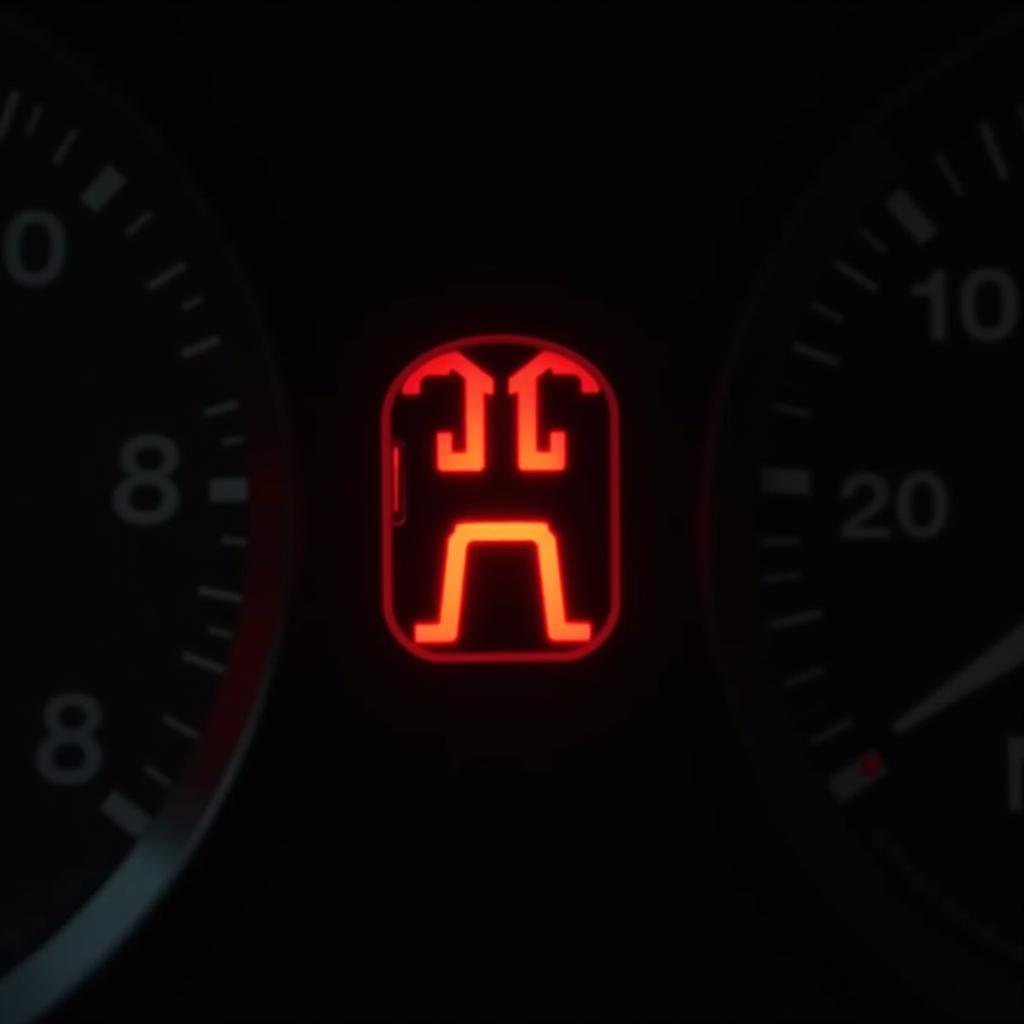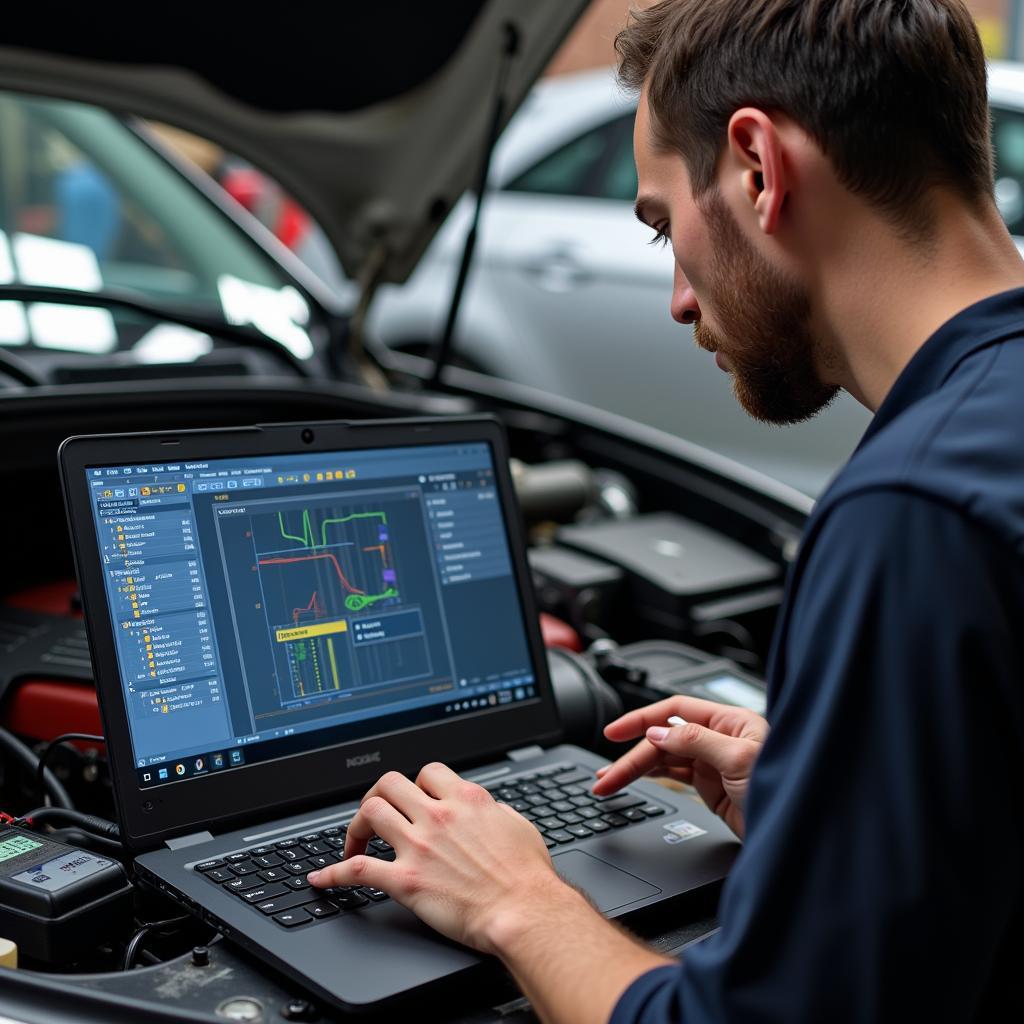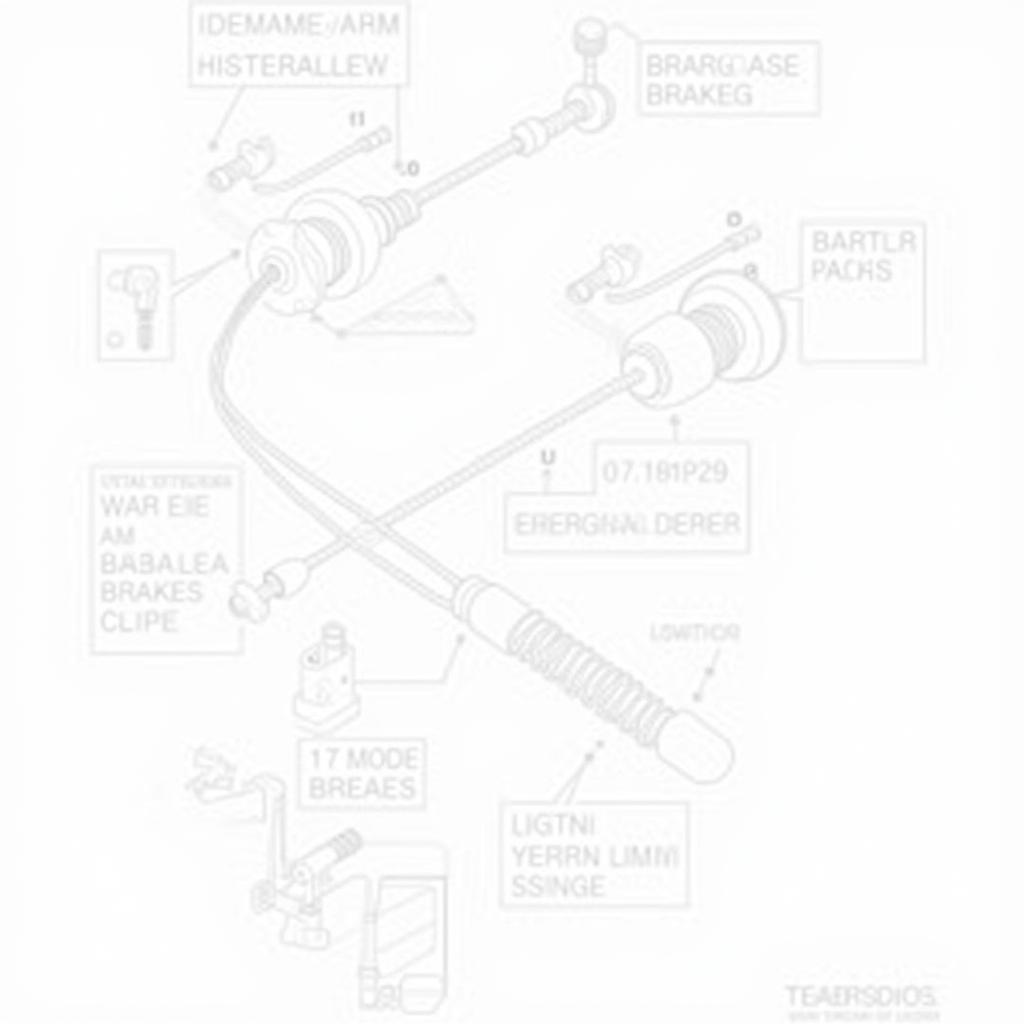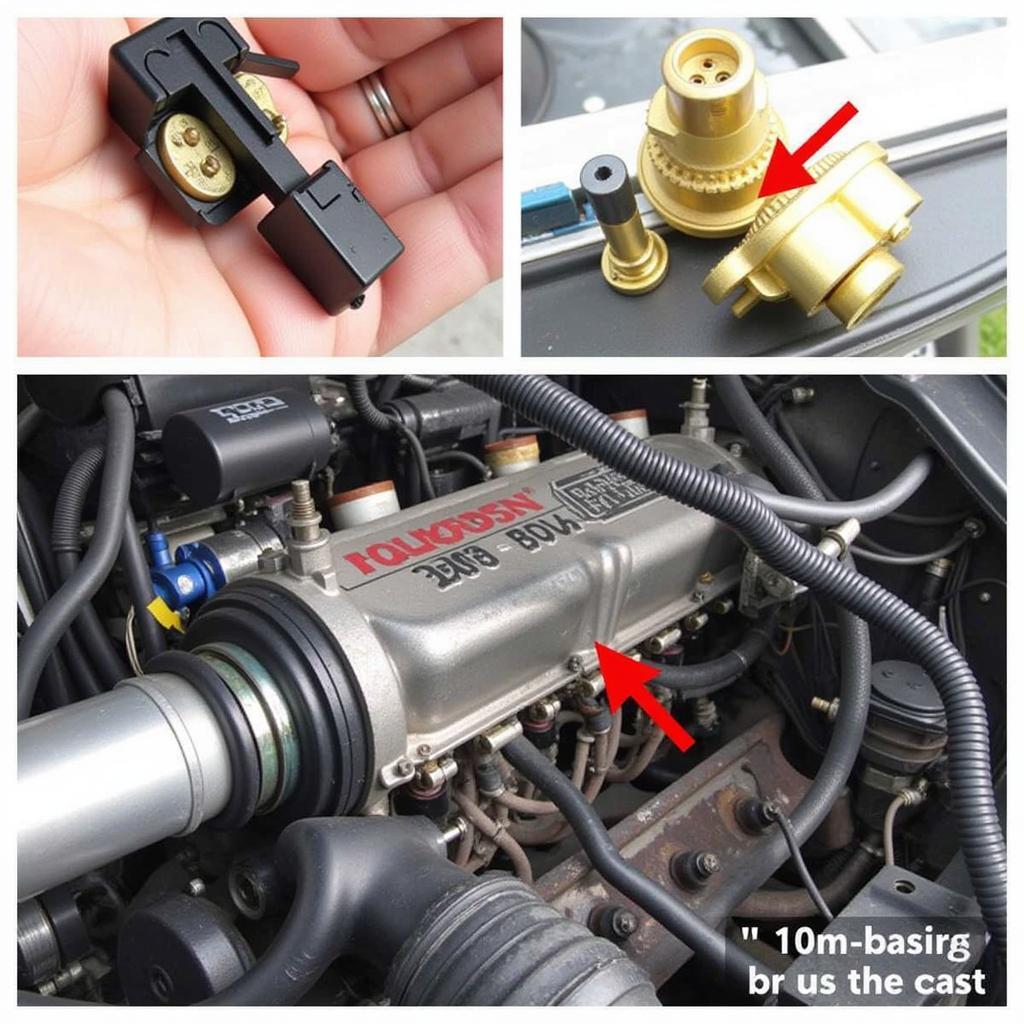Driving with the brake pad warning light glaring at you is never a good idea. It indicates your brake pads are critically worn and require immediate attention. But how long can you drive after the light comes on? And more importantly, how much driving time do you have left?
This comprehensive guide will delve into these questions and provide all the information you need to know about brake pad lifespan, warning signs, and the importance of timely replacement.
Understanding the Brake Pad Warning Light
Modern vehicles are equipped with a simple yet effective system to alert you about worn brake pads – the brake pad warning light. This light, often shaped like an exclamation mark within a circle, illuminates on your dashboard when the brake pad sensor detects a critically low pad thickness.
The sensor, usually a small piece of metal embedded within the brake pad material, comes into contact with the brake rotor as the pad wears down. This contact completes a circuit, triggering the warning light on your dashboard.
 Brake Pad Warning Light on Dashboard
Brake Pad Warning Light on Dashboard
How Long Can You Drive With the Brake Pad Warning Light On?
While it’s difficult to provide an exact timeframe, the general consensus is you shouldn’t drive more than 50-100 miles after the brake pad warning light comes on. This is a rough estimate, and the actual distance can vary significantly depending on:
- Driving conditions: Frequent city driving with constant braking will wear down your brake pads faster than highway driving.
- Driving style: Aggressive braking habits shorten brake pad lifespan.
- Brake pad quality: High-quality brake pads generally last longer than cheaper alternatives.
It’s crucial to remember that driving with worn brake pads compromises your safety and the safety of others on the road. As the pad material wears down, your braking distance increases, increasing the risk of accidents.
Ignoring the Warning Light: The Consequences
Ignoring the brake pad warning light can lead to severe and costly consequences, including:
- Damaged Rotors: Driving with worn brake pads can damage the brake rotors, leading to costly repairs or even replacements.
- Brake Failure: In extreme cases, completely worn-out brake pads can lead to brake failure, putting your life and the lives of others at risk.
- Increased Repair Costs: Delaying brake pad replacement often results in more extensive and expensive repairs down the line.
What to Do When the Warning Light Comes On
As soon as the brake pad warning light illuminates, it’s crucial to take immediate action:
- Reduce Speed and Drive Cautiously: Avoid sudden braking and maintain a safe distance from other vehicles.
- Schedule an Inspection: Contact a trusted mechanic specializing in brake repair to have your brake system inspected as soon as possible.
- Consider Remote Diagnostics: Some automotive specialists like myself offer remote diagnostic services. We can remotely assess the severity of the issue and advise you on the next steps. This can be particularly helpful in determining if it’s safe to drive to a repair shop or if you require towing services.
- Don’t Delay Repairs: Timely brake pad replacement is significantly cheaper and safer than dealing with the consequences of ignoring the warning light.
Extending the Life of Your Brake Pads
While brake pad replacement is inevitable, you can maximize their lifespan by adopting these driving habits:
- Anticipate Stops: Look ahead and anticipate stops to avoid unnecessary braking.
- Coast to a Stop: When approaching a red light or stop sign, take your foot off the accelerator and allow the car to coast to a stop gradually.
- Avoid Heavy Loads: Carrying heavy loads puts additional strain on your brakes, leading to faster wear and tear.
- Maintain Proper Tire Pressure: Underinflated tires increase rolling resistance, requiring your brakes to work harder.
Remote Diagnostics and Programming: The Future of Car Repair
The automotive industry is rapidly evolving, and so are the ways we diagnose and repair vehicles. Remote diagnostics and programming are at the forefront of this revolution, offering car owners a convenient and efficient way to address automotive issues.
As an expert in remote automotive solutions, I leverage advanced technology to diagnose and resolve various car problems, including those related to brakes. Here’s how it works:
- Connect Remotely: Using specialized software and equipment, I can establish a secure connection to your vehicle’s onboard computer system.
- Diagnose the Issue: I can remotely run diagnostics, read error codes, and analyze real-time data from your vehicle’s sensors to accurately pinpoint the root cause of the problem.
- Provide Solutions: Based on the diagnosis, I can provide you with a detailed report and recommend the most effective course of action, whether it’s a simple reset or a visit to a local repair shop.
- Remote Programming: In certain situations, I can even perform software updates and programming remotely, saving you a trip to the dealership.
 Mechanic Performing Remote Diagnostics on a Laptop
Mechanic Performing Remote Diagnostics on a Laptop
FAQs about Brake Pad Warning Lights
Q: Can I reset the brake pad warning light myself?
While it’s technically possible to reset the warning light, it’s not recommended unless you’ve replaced the brake pads and are confident the issue is resolved.
Q: How much does it cost to replace brake pads?
The cost of brake pad replacement varies depending on your vehicle’s make and model and the type of brake pads you choose. However, it’s generally a much more affordable repair than dealing with the consequences of worn-out pads.
Q: How often should I get my brakes inspected?
It’s best practice to get your brakes inspected at least once a year or every 12,000 miles, whichever comes first.
Q: Can I replace my brake pads myself?
While it’s possible to replace brake pads yourself if you have mechanical skills, it’s generally recommended to have this service performed by a qualified mechanic to ensure proper installation and safety.
Q: My brake warning light is flashing. Is it different from a solid light?
A flashing brake warning light often indicates a more serious issue with your braking system, such as a problem with the ABS (Anti-lock Braking System). It’s crucial to address this issue immediately.
Conclusion
The brake pad warning light is a crucial safety feature you should never ignore. While you might have some driving time left after the light comes on, it’s essential to prioritize your safety and schedule an inspection immediately. Remember, timely brake pad replacement is a small investment that can prevent costly repairs and, most importantly, keep you safe on the road.



